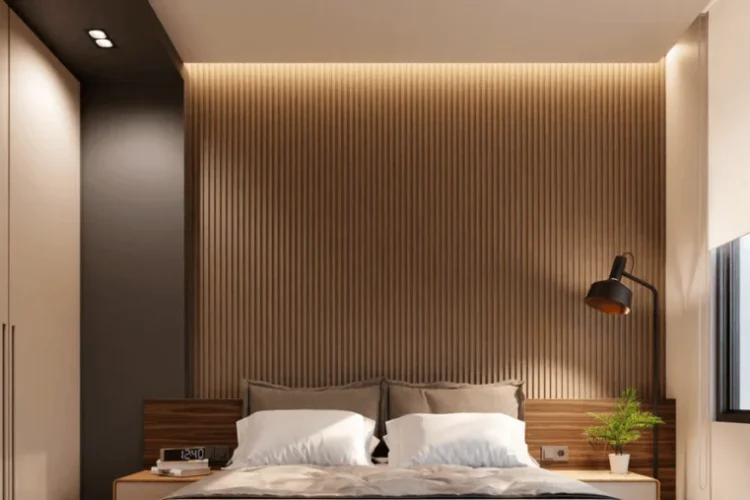Introduction: Unveiling the Beauty of Fluted Panels
Fluted panels have long been admired for their timeless elegance, versatility, and ability to add depth and character to architectural and interior design projects. From classic columns to modern wall treatments, fluted panels offer unique aesthetic appeal and functional benefits. In this comprehensive guide, we’ll explore fluted panels’ history, design possibilities, installation methods, and applications across various industries.
1. Understanding Fluted Panels: A Brief Overview
Fluted panels are characterized by parallel grooves or ridges, known as flutes, that are evenly spaced across the surface. These flutes create a sense of rhythm, texture, and visual interest, making fluted panels a popular choice for decorative elements in architecture and interior design. These panels can be made from various materials, including wood, metal, fiberglass, and composite materials, offering designers a wide range of options to suit their aesthetic preferences and project requirements.
2. The History of Fluted Panels: From Ancient Greece to Modern Design
Fluted panels have a rich history that dates back to ancient times. Fluted columns can be traced to classical Greek and Roman architecture, where they were employed as decorative elements in temples, palaces, and public buildings. The fluting of columns served aesthetic and structural purposes, providing visual interest while reducing the column shaft’s weight. Over time, fluted panels expanded beyond architectural columns to include a variety of interior and exterior applications, from wall panels to furniture accents.
3. Design Possibilities with Fluted Panels
a. Architectural Columns: Fluted columns remain one of the most iconic uses of fluted architectural panels. Whether employed in traditional or contemporary designs, fluted columns add a sense of grandeur and sophistication to buildings, making them ideal for entrances, lobbies, and exterior facades.
b. Wall Treatments: Panels can create stunning wall treatments that add texture and visual interest to interior spaces. Fluted wall panels can transform ordinary walls into focal points, adding depth and dimension to residential and commercial interiors, whether installed vertically or horizontally.
c. Furniture Design: Panels are also popular in furniture design, where they are used to create stylish and elegant pieces such as cabinets, doors, and drawer fronts. Fluted detailing adds a touch of refinement to furniture pieces, lending them a sense of craftsmanship and sophistication.
d. Ceiling Design: Panels can be incorporated into ceiling design to create dramatic and eye-catching ceilings. Whether used as ceiling tiles or in coffered ceiling designs, fluted panels can enhance the architectural character of a space while also providing acoustic benefits and hiding imperfections.
4. Installation Methods and Considerations
a. Material Selection: When choosing panels, it’s essential to consider the material properties, durability, and maintenance requirements. Wood, metal, and composite materials have advantages and limitations, so selecting the suitable material for the specific application and environment is essential.
b. Installation Techniques: Fluted panels can be installed using various techniques, including adhesive bonding, mechanical fastening, and interlocking systems. The installation method will depend on factors such as the substrate, panel size, and design requirements.
c. Surface preparation: Proper surface preparation is critical to successfully installing panels. Surfaces should be clean, dry, and free from dust, grease, and other contaminants to ensure optimal adhesion and performance.
d. Maintenance and Care: Depending on the material and finish, fluted panels may require periodic maintenance to preserve their appearance and integrity. Regular cleaning with mild detergent and water and routine inspections for damage or wear can help extend the lifespan of panels and keep them looking their best.
5. Applications Across Industries
a. Commercial Spaces: Panels are commonly used in commercial spaces such as offices, retail stores, and restaurants to create a sophisticated and upscale ambiance. From feature walls to reception desks, panels add a touch of elegance and refinement to commercial interiors.
b. Residential Interiors: Panels often add character and charm to interiors in residential settings. Whether applied to kitchen cabinetry, bedroom headboards, or living room walls, panels bring texture and visual interest to residential spaces, creating a warm and inviting atmosphere.
c. Hospitality Design: Panels are a favorite among hospitality designers for their ability to evoke a sense of luxury and sophistication. From boutique hotels to upscale resorts, panels can be found adorning everything from lobby walls to bar fronts, creating memorable and immersive guest experiences.
d. Public Spaces: Panels are also used in public spaces such as museums, libraries, and theaters to create visually striking architectural elements. Whether employed as ceiling features, wall cladding, or decorative screens, panels enhance the ambiance and aesthetic appeal of public environments, making them more inviting and engaging for visitors.
6. Conclusion: Elevating Design with Fluted Panels
Fluted panels offer timeless elegance and versatility, making them a popular choice for architects, interior designers, and homeowners alike. Whether used to create grand architectural statements or subtle interior accents, panels can transform ordinary spaces into extraordinary works of art. By understanding the history, design possibilities, and installation considerations of panels, designers can harness the beauty and sophistication of this classic architectural element to elevate their projects and create memorable spaces that stand the test of time.




0 Comments